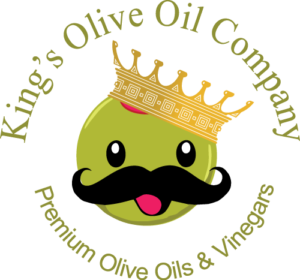Marinate
The purpose of marinating is for food to absorb the flavors of the marinade or, as in the case of a tough cut of meat, to tenderize it. Because most marinades contain acidic ingredients, (4 percent in a dark balsamic and 6 percent in a white balsamic) the marinating should be done in a glass, ceramic or stainless steel container or in a Ziploc bag—never in aluminum. For each pound of food to be marinated, (meat, poultry, fish, vegetables) use 1 tablespoon each of EVOO and balsamic. Mix contents well and distribute evenly over food. Cover container. For best results, marinate for at least 1 hour, or up to 6-8 hours, in the refrigerator. Turn food halfway through marinating time. Remove food from the refrigerator at least 30-45 minutes before cooking and allow it to come to room temperature. Remove from marinade. (Note: When fruits are similarly prepared, the term used is macerate.)
Emulsify
Slowly add EVOO to balsamic vinegar while whisking vigorously. Emulsified mixtures are usually thick and satiny in texture. Emulsifying will allow you to evenly disperse a vinaigrette flavor over salads and fruit. For vinaigrette, the usual ratio is 1:3 (e.g., 1 tablespoon balsamic to 3 tablespoons EVOO).
Caramelize
Brush or drizzle any of the balsamics on meat, fish, fruit or vegetables. Cook over medium heat in a pan coated with 1–2 tablespoons of EVOO until the naturally occurring sugars in the balsamic become thicker and sticky, helping to brown (caramelize) the surface of the food.
Sauté
From the French word sauter, meaning “to jump”. Sautéed food is cooked and stirred in a small amount of fat over fairly high heat in an open, shallow pan. Food cut into uniform size sautés the best. Use 1-2 tablespoons of EVOO in a skillet or sauté pan over medium-high heat. True EVOOs will withstand heat of up to 300–325 degrees.
Deglaze
After food (usually meat) has been sautéed and the food and excess fat removed from the pan, deglazing is done by heating a small amount of liquid in the pan and stirring to loosen browned bits of food on the bottom. The resultant mixture often becomes a base for a sauce to accompany the food cooked in the pan. Use one of the balsamics to deglaze a pan.
Reduce
Bring one of the balsamics to a slow boil. Keep an eye on the pan and whisk every few minutes until 50 percent of the volume is reduced by evaporation, thereby thickening the consistency and intensifying the flavor. Such a mixture is sometimes referred to as a reduction or a glaze and is used to finish both sweet and savory dishes such as desserts, fruits, or meats, fish, chicken and pork. Use immediately. If made ahead of time and has cooled it might become too thick to pour. If that is the case, bring back to pouring consistency by barely heating back up in the pan over low heat.
